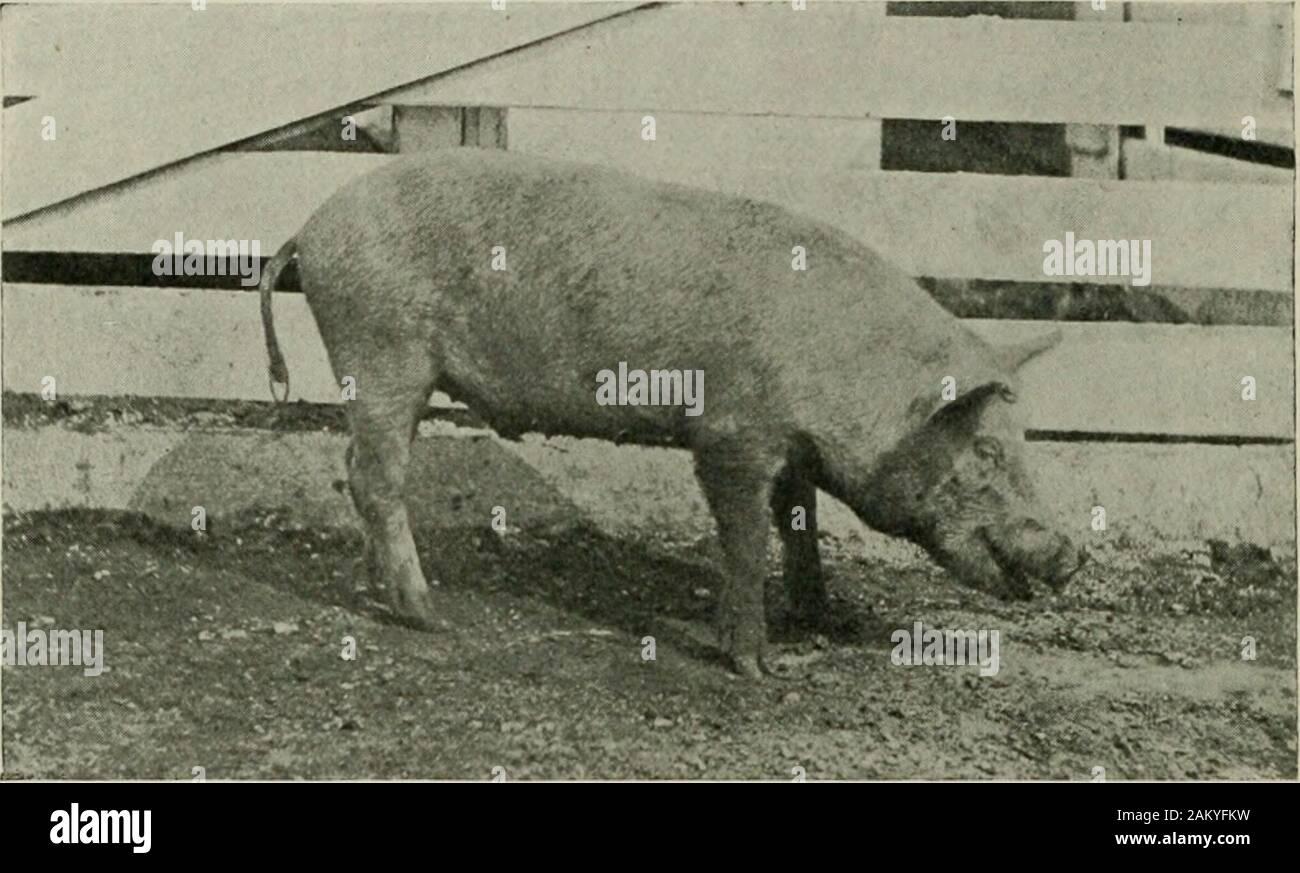Diseases of swine, with particluar reference to hog-cholera . alabsolutely refuses food of all kinds. There is, however, a burningthirst, as a result of the high fever, and if the sick hog is in a pasturewhere there is a running stream, this desire for water, both inter-nally and externally, will usually cause him to travel to the banksof the stream, where he will burrow himself in the cooling water andmud to relieve the discomfort produced by the high fever, which is 170 DISEASES OF SWINE simply burning up the body of the animal and drying all the waterout of his tissues. When cholera animals

Image details
Contributor:
The Reading Room / Alamy Stock PhotoImage ID:
2AKYFKWFile size:
7.1 MB (311.6 KB Compressed download)Releases:
Model - no | Property - noDo I need a release?Dimensions:
2036 x 1227 px | 34.5 x 20.8 cm | 13.6 x 8.2 inches | 150dpiMore information:
This image is a public domain image, which means either that copyright has expired in the image or the copyright holder has waived their copyright. Alamy charges you a fee for access to the high resolution copy of the image.
This image could have imperfections as it’s either historical or reportage.
Diseases of swine, with particluar reference to hog-cholera . alabsolutely refuses food of all kinds. There is, however, a burningthirst, as a result of the high fever, and if the sick hog is in a pasturewhere there is a running stream, this desire for water, both inter-nally and externally, will usually cause him to travel to the banksof the stream, where he will burrow himself in the cooling water andmud to relieve the discomfort produced by the high fever, which is 170 DISEASES OF SWINE simply burning up the body of the animal and drying all the waterout of his tissues. When cholera animals have the range of a pasture in whichthere is a running stream the dead hogs are usually to be foundeither in the stream or close by its banks. In a very large number of cholera cases the sick animal, ifaroused and forced to get out of the litter and move about, willtake a few staggering steps, then stand with the back arched, theflanks drawn up, the hind legs crossed, the tail drooping, the headlow, and start to cough. This cough of cholera is more or less. Fig. 51.—Typical case of hog-cholera. Nottand cough. loop oi tail, arching of back, pecuhar. It has something about it that is different from anyother cough which hogs have, and once it has been heard it is nothard to tell when you hear it again. It is a sort of dry, suppressed, barking cough, but has to be heard to be fully appreciated. Manyexperienced veterinary surgeons and livestock men can tell it theminute they hear it, and can made a pretty good guess on thediagnosis of the case without even seeing the sick hogs at all. This cough, however, is not present in all cases. It is more com-mon and more severe in those cases where there is severe cholerainfection of the lungs and other organs in the chest. I have, however, seen many sick hogs which had a very severe cough dur- SYMPTOMS IN ACUTE TYPE 171 ing the course of the disease, and yet which showed but very Uttledisease in the lungs when opened up after they had died.